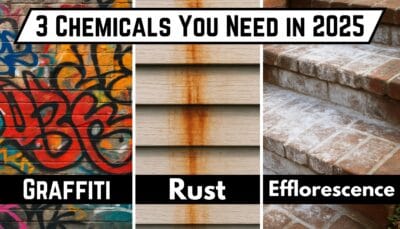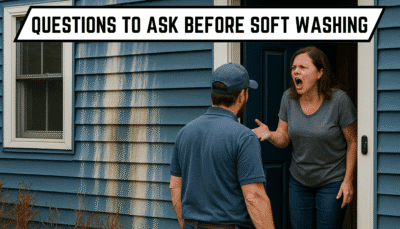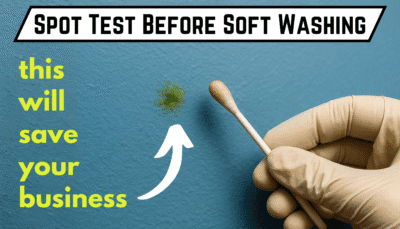Softwash Nightmare: The Case of the Withered Roses
- Posted by: Collin Steele

John, a newly minted soft wash technician, arrived at Mrs. Thompson’s charming Victorian home on a sunny Saturday morning. He was eager to prove himself and build a reputation for thorough work. Armed with state-of-the-art soft wash equipment and a potent chlorine solution, John set to work. His goal was clear: deliver the most comprehensive soft wash service possible.
However, John failed to consider the delicate nature of Mrs. Thompson’s prized rose bushes lining the side of the house. As he applied the chlorine solution to the siding, overspray and runoff began to seep into the soil around the roses. John had skipped two critical steps: pre-wetting the plants and soil to dilute any runoff, and rinsing the area after soft washing to neutralize the chlorine.
In his focus on delivering flawless results, John overlooked the need for preparation and plant protection. He didn’t shield the rose bushes or reduce the chemical’s impact on the surrounding environment.
The Aftermath of Soft Washing with Chlorine
Within days of the soft washing with chlorine, Mrs. Thompson noticed changes in her roses. The once-vibrant leaves wilted and discolored. Flowers drooped, and the overall health of the bushes rapidly declined.
Mrs. Thompson contacted John with her concerns. He now faced the harsh reality of the damage caused by his oversight. The consequences weren’t just financial. They were personal. Mrs. Thompson’s trust in John had been broken, and his reputation as a soft wash professional took a serious hit.
This case serves as a reminder of what can go wrong when using chlorine in soft washing. Even with good intentions, failing to prepare properly can have damaging effects. Soft washing with chlorine requires a thoughtful, holistic approach. You must consider the impact not only on the surface being cleaned but also on the surrounding landscape.
Key Takeaways
Moral of the story: Proper preparation, attention to detail, and respect for the environment are essential when soft washing with chlorine.
What should have been done better:
- Pre-wet plants and soil to dilute any potential chlorine runoff.
- Rinse affected areas after soft washing to neutralize the corrosive chemical.
- Use protective barriers such as plastic sheets to shield delicate plants and landscaping from chlorine overspray.
- Adjust the concentration of the chlorine solution based on the sensitivity of the surrounding environment.
- Communicate with the client about the potential risks associated with chlorine and the steps taken to mitigate them.
Latest Blog Posts
If you’ve been soft washing for a while, or even if you’re just starting out, you’ve probably heard the word
...









